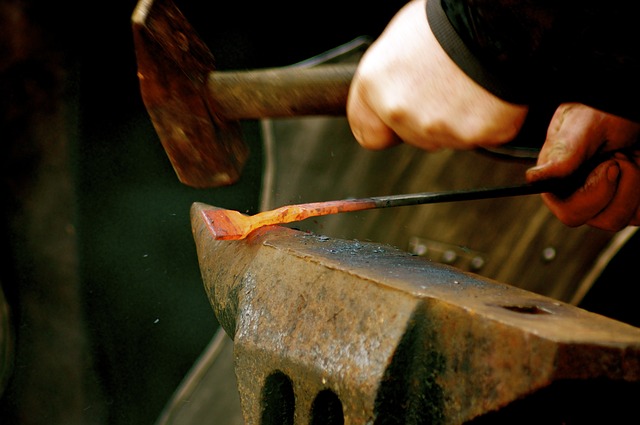Here’s How not to Start a Business:
You’ve got a great idea for a product or service that you know everyone will want as much as you do. So you sketch it out on paper and get to work building it for the next few months. Maybe its a web application or a product you can sell through a retail store. Maybe its a service and you’re working out the positioning. It doesn’t matter. This is a great idea. And you’re busy creating it.
 Once you’ve got the first version done, you show it to a few friends who offer suggestions on how to make it better. Great! You go back to your product and work for another couple of months. These are all good suggestions worth adding and they make the product a lot better. Once you’ve completed the revisions, you’re ready to show it to a potential customer. And you’re pretty sure they’ll buy it—in part because of all the great additions you’ve made to the first version.
Once you’ve got the first version done, you show it to a few friends who offer suggestions on how to make it better. Great! You go back to your product and work for another couple of months. These are all good suggestions worth adding and they make the product a lot better. Once you’ve completed the revisions, you’re ready to show it to a potential customer. And you’re pretty sure they’ll buy it—in part because of all the great additions you’ve made to the first version.
The presentation goes well. Your customer likes the idea and the progress you’ve made so far, but it’s not quite right for them. So they suggest a few changes and ask you to re-engineer things so your product matches their own internal processes. Once that’s done, they can take another look and figure out if it is something they will buy.
The feedback is really helpful. You learn how your product can fit in a real-world situation, so you go back to work, adding the new suggestions and reworking things to fit their process. It takes a few more months, but the time invested is worth it because you are building something that a customer says they want and might even buy.
By now you’ve made a lot of progress…
You’ve got a product that you like, your friends like, and a potential customer says they might buy.
But you have no commitments. And, more importantly, no sales.
You want to start a business but all you’ve done so far is spend several months building something no one is buying.
What You Should Do Instead
Too many founders start by creating a solution to a problem. Instead they should be asking: How painful is the problem? Will anyone pay for the solution I can build? And most importantly, can I build a sustainable business around my solution?
Experts like Eric Ries recommend that you build an MVP—a minimal viable product. Ask how minimal and he’d say, “Probably more minimal than you think!”
The idea is to build something that is the bare-minimum required to sell it. In fact, you may not even need to build an actual product to prove your concept. But you do need to create something so customers can see how things would work.
Let’s say you want to start a business selling home-made fugde. (We used this example in our post about figuring out if you can make a profit with your startup idea).
 You know in order to make a living at this, you need to sell about 300 boxes of fudge a month. And you can’t sell a box of fudge without boxes (and fudge) so you could spend money on packaging and ingredients, make the product, and then put up a website or start shopping it around to local restaurants.
You know in order to make a living at this, you need to sell about 300 boxes of fudge a month. And you can’t sell a box of fudge without boxes (and fudge) so you could spend money on packaging and ingredients, make the product, and then put up a website or start shopping it around to local restaurants.
Don’t do this.
Instead, put up a one page website with a good sales message for your fudge. We would recommend you spend more time crafting the message on the page than you spend actually building the website. Next week we’ll write about the specifics of setting up a simple website online, but for now, this will suffice: Find a web host and purchase a domain (we use blue host for many of our sites), install WordPress and add a free or low-price template. Then add photos of your product and an appropriate sales message.
Note: you still haven’t spent a penny on making fudge or packaging.
Now it’s time to go to work. Using your website as a base, reach out to as many potential customers as possible on social media: Facebook, Google Plus, Twitter, Pinterest, Reddit, Stumbleupon, and anywhere else you can get someone to notice you. Ask your friends and family to share you page. Now is not the time to be shameless. (Joel Gascoigne of Buffer wrote about how he did it in a post worth reading here.)
You may also want to run a few very inexpensive ads in Adwords, Bing, or the Amazon Ad Network. (We wrote a bit about that process here). The idea is to drive real customer traffic to your site so you can see real customer behavior.
You’re not looking for people to tell you what a good idea you have.
Ask them to buy.
If they don’t buy, ask them, why?
Is the price too high? Do they already have a preferred fudge brand? Do they like or dislike the flavors you offer? Is the idea of shipping fudge to their home odd? Where would they expect to buy your product? What kind of packaging do they expect? What do they think of the brand name you chose?
With an MVP, you are trying to learn everything you can about your customer, the market for your product, what customers want to know before they buy, how they want their product delivered, what flavors they would pay for, and on and on.
At this point you may learn that while people like your idea, they’re not willing to buy it online. So you might adjust your go-to-market plan and start pitching your fudge to shops and eateries around town. Or perhaps people expect to pay less. Can you lower the price and still make enough to stay in business? Can you add something to increase the perceived value of your product? It’s even possible that people don’t really want to buy fudge for themselves, but they will pay more for gourmet fudge as a gift for special occasions. So you might raise your price, rework the messaging on your web page, and try again.
You should split test your product offer by sending web traffic to different pages with different features, different pricing, and different copy. Learn what works and what doesn’t.
If you get an order or two at this stage, you can choose to make a small batch and send it to your customers, or you could cancel the order with apologies until you are truly ready to launch. (See how the Buffer team handled this in that link above).
Learn What Works, Then Fine Tune Your Product
 Once you figure out what works, you can then start adding new features and fine tuning your product to appeal to more/specific customers. You’ll start making money, which helps pay for the added features and product updates you will want to make. Michael Cho wrote about that process for Ooomf here (another link worth reading).
Once you figure out what works, you can then start adding new features and fine tuning your product to appeal to more/specific customers. You’ll start making money, which helps pay for the added features and product updates you will want to make. Michael Cho wrote about that process for Ooomf here (another link worth reading).
Okay, we can hear you saying… easy enough for a product like fudge, but what if I want to start a business that only works when it’s up and running. What about an idea that connects job seekers to job opportunities (a sort of a Tinder for employment)? You need more than a simple web page for that, right?
Maybe, but maybe not. Read the post about Ooomf at that last link.
Start by creating your web page. And again, spend a lot of time on getting the messaging right. You’ll need to figure out what kind of information you would collect from you potential customers and probably need a mechanism for uploading a resume and cover letter. This idea requires a bit more work on the web site, but not a lot.
Once the site is ready, go to work promoting it everywhere. As potential customers visit your site and give their information, it’s now up to you to create the experience they are looking for. Because your website isn’t up and running yet, you will need to find job openings to present to them (by searching the web and other job sites, contacting recruiters, and then sending an individualized email to your customers with the results, for example).
The idea here is to simulate your business idea as closely as possible without actually spending time or money building it until after you know customers will pay for your service. To your customers, it looks like the website is doing the work, but in reality it is you putting things together offline.
Once customers are paying you for the service, then start building the product.
Why Building an MVP is a Good idea
1. An MVP allows you to prove your business before you invest a lot of time and money into it. The benefit here is obvious, why spend time building something you can’t turn into a profitable business? If it isn’t working, get out and try something else.
2. An MVP allows you to figure out processes and features that you can’t predict before you have customers. Because you haven’t invested a lot into a specific process or product, you’re not locked into something you can’t easily change. Customers won’t buy fudge for delivery? Okay, let’s try a different distribution system. Job Applicants won’t pay more than $25 for access to your job list? Okay, let’s test different pricing and access levels. Maybe we can add a free resume service to increase the value.
3. An MVP allows you to pivot to related ideas quickly. The idea of pivoting from a bad idea to a better one is popular in the startup world. But the fact is, if you have invested time and resources into a particular solution, changing course is hard. You’ve got so much invested in the old idea that it is hard to let go. With an MVP, changes are much easier to stomach. Let’s say we learn people think fudge is a luxury gift, not something they buy every week. Maybe we can add cookies, brownies, and other treats to encourage more buying. Or perhaps we can create a gifting service that makes sure a customer’s loved ones receive a special treat on every birthday and anniversary. The possibilities are open because we didn’t invest too quickly in our first idea and now need to make it work.
4. An MVP helps you maximize your chances for success. By getting real customer feedback (not just people saying they like your idea) and real customers paying for your product, you vastly increase your chances of success. And if you fail, you cut your losses before they cost you anything. The feedback comes before its too late to make changes. And you learn what features your customers want, and just as importantly, what they don’t want.
You could spend a lot of time building what you think your customers want. Or could do it right and build a minimum viable product, then learn what your customers want before you spend your time and money fine tuning your profitable business.
Photo credit: Fudge by Jennifer, tuning knob by Michael Rosenstein.







